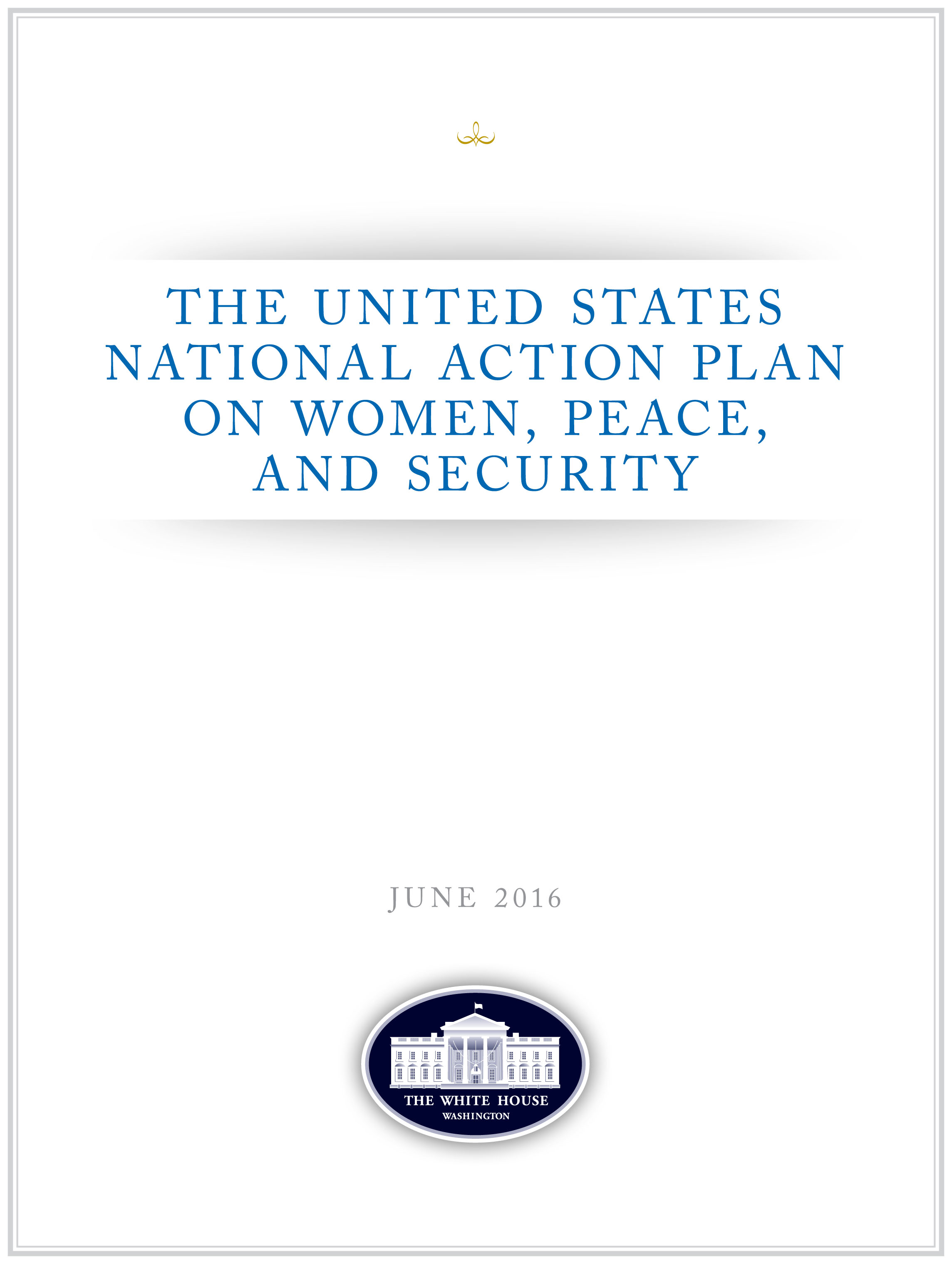The goal of the United States National Action Plan on Women, Peace, and Security is as simple as it is profound: to empower half the world’s population as equal partners in preventing conflict and building peace in countries threatened and affected by war, violence, and insecurity. Achieving this goal is critical to our national and global security.
Deadly conflicts can be more effectively avoided, and peace can be best forged and sustained, when women become equal partners in all aspects of peacebuilding and conflict prevention, when their lives are protected, their voices heard, and their perspectives taken into account.
As directed by Executive Order 13595 in 2011 entitled Instituting a “National Action Plan on Women”, Peace, and Security, this Plan describes the course the United States Government will continue to take to accelerate, institutionalize, and better coordinate our efforts to advance women’s inclusion in peace negotiations, peacebuilding activities, and conflict prevention; to protect women from gender-based violence (GBV); and to ensure equal access to relief and recovery assistance, in areas of conflict and insecurity.
The Plan remains guided by the following five principles:
First, the engagement and protection of women as agents of peace and stability are central to the United States’ efforts to promote security; prevent, respond to, and resolve conflict; combat violent extremism; and rebuild societies.
Second, by building on the goals for gender integration described in the United States National Security Strategy and the Quadrennial Diplomacy and Development Review, the United States’ efforts on Women, Peace, and Security complement and enhance existing initiatives to advance gender equality and women’s empowerment, ensure respect for human rights, and address the needs of vulnerable populations in crisis and conflict environments.
Third, in executing this policy, the United States is guided by the principle of inclusion, seeking out the views and meaningful participation of a wide variety of stakeholders—women and girls, men and boys, and members of marginalized groups, including youth, ethnic, racial or religious minorities, persons with disabilities, displaced persons and indigenous peoples, lesbian, gay, bisexual, transgender, and intersex (LGBTI) individuals, and people from all socioeconomic strata.
Fourth, in order to maximize the impact of this Plan, the United States seeks to ensure that activities in support of Women, Peace, and Security are coordinated among all relevant departments and agencies of the government, integrated into relevant United States foreign policy initiatives, and enhanced by engagement with international partners.
Finally, United States Government departments and agencies are accountable for the implementation of the policies and initiatives endorsed in this Plan.
Above all, this National Action Plan expresses the United States’ unqualified commitment to integrating women’s views and perspectives fully into our diplomatic, security, and development efforts—not simply as beneficiaries, but as agents of peace, reconciliation, development, growth, and stability. We welcome this opportunity to work with our international partners to make the promise of this commitment real, to advance implementation of United Nations (UN) Security Council Resolution 1325 (2000), and to make significant progress toward the goal of sustainable peace and security for all.








Comment
Make a general inquiry or suggest an improvement.